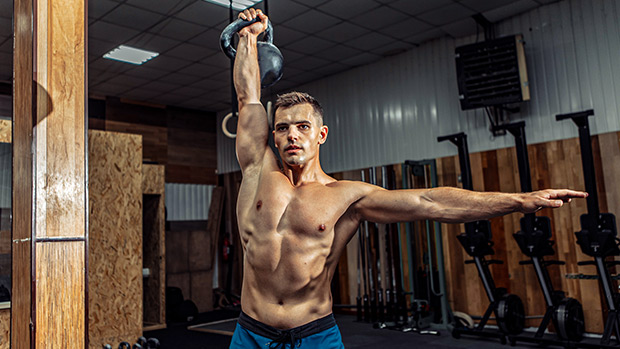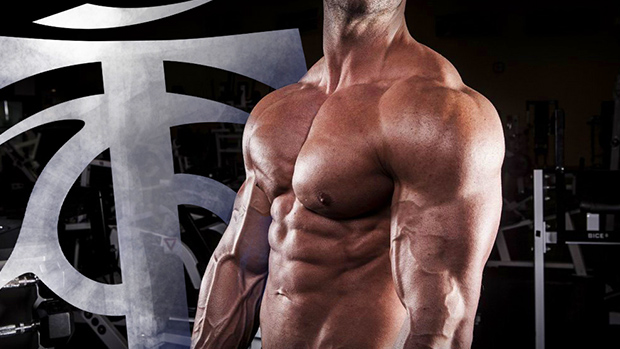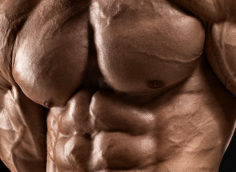The biggest hurdle to mobility work? You probably find it tedious, uncomfortable, and time-consuming. I get it. We want to lift, not wrap ourselves in bands and lay on lacrosse balls.
You want to perform better, go heavier, and hurt less. It's not a question of desire to improve mobility. But getting down to it seems like choking down vegetables when there's a steak on the table.
Here are four movements to improve your mobility and flexibility that aren't boring and don't taste like kale:
If you're unable to get your biceps close to your ears while standing without arching your back or shrugging, you probably have some difficulty or pain with overhead exercises.
But many people actually do have the flexibility to get there. Try it again, but have someone behind you gently try to push your arms closer together.
If they did, you have a mobility problem, not a flexibility problem. All the Theragunning, banding, and lacrosse-balling isn't going to touch this. You need to lift heavy things to get stronger in this end range.
Here's what to do:
- Carry for 20-30 meters at a time on each side.
- Only move up to a weight that'll allow you to maintain an upright position with a locked-out shoulder for the entire distance.
- Brace your core. Refrain from arching your back to compensate for a more upright position overhead.
The kettlebell is the best choice for an overhead carry. Yes, it may be uncomfortable on the wrist, but the way a kettlebell is shaped will help open the front of the shoulder and move you into a more streamlined upright position.
This effect is going to encourage flexibility, while the bracing and maintaining of the locked-out position will improve strength and mobility at this new end range.
Dumbbells are an okay option, but half of the weight is forward of your hand. This is pulling you in the direction that your tight shoulders want to go, defeating the purpose and limiting the benefit.
With your legs fully extended from a standing position, can you touch the floor at least somewhat comfortably? If not, you either already have injury issues with deadlifting, or they're on their way.
You may be able to improve your flexibility with bands and foam rolling, but these gains are often temporary. You also need to gain strength through this range of motion.
Using a loaded barbell does both at the same time. The subtle change in the thought process of a top-down Romanian deadlift will leave you with buttery hamstrings. Lowering the weights will engage a stretch of the hamstrings and glutes, but because we're using weight to access that, you'll also gain the strength and control through this new range of motion to develop mobility.
Here's what to do:
- Pick up the bar from the floor in a conventional setup.
- Only lower the bar to the max depth that you can keep your back perfectly neutral and your knees extended back.
- Look and feel for the stretch, but without forcing it.
- Use a tempo of 3111 for 8-10 reps. You lower for 3 seconds, pause at the bottom for 1 second, lift for 1 second, and pause at the top for 1 second.
- As the weeks progress, focus on expanding the range of motion, not using more weight at your old range of motion. That's how you got here.
The purpose of thinking "top-down" is to gear your mind towards expanding the range of motion in the bottom of the rep instead of adjusting the depth of the rep based on loading.
Lay flat on your back and keep your lower back flush to the floor. Now, can you reach overhead with a straight arm and touch the floor with your thumb and pointer finger? If not, or if it's uncomfortable, then you lack some mobility.
Landmine presses might not be new to you, but if you do it this way, it'll improve mobility as well as strength.
Here's what to do:
- Use a 3012 tempo. So 3 seconds down, no pause, 1 second up, and pause 2 seconds at the top. Do 3-4 sets of 8-10 reps.
- Only increase load if you're able to continuously achieve the same range of motion as the previous set.
- Focus on stacking your hand in line with your hip instead of increasing weight at a shorter range of motion.
Remember, you gain in the range you train. If you're only allowing your arm to press out at an angle away from your body, you'll never develop the flexibility and strength needed for true vertical pressing.
The goal here is to achieve a streamlined position from fist to hip. As you begin to press the weight, lean your torso forward. You'll know you're improving if you feel a stretching sensation in your lat and the front part of your shoulder.
While flat on your back, can you pull your leg comfortably to where your thigh touches your rib cage? From a standing position, can you raise your leg under its own strength to a height where your knee is above your hip?
Limitations in these two assessments are common. They usually coincide with shaky squat patterns or pain when squatting.
Here's what to do:
- The main goal is to bring your thigh as high towards your chest as possible. Internally or externally rotating at the hip is cheating and defeats the purpose. Think about trying to keep the sole of your foot parallel with the floor at all times.
- Refrain from bringing your chest down to meet your thigh.
- Use a goblet or dual-rack hold.
- Switch between increasing height and increasing weight every week.
- Do 8-10 reps per side.
Heavy squatting with tight hips is miserable and sometimes painful in the lower back. Mashing your hips with a kettlebell can be effective in the short term, but it can also make you feel like you're going to puke. Gaining control and expanding the range of motion through the hip while loading your body with heavy weights will get you squatting to deeper depths.
Expand your hip mobility with heavy goblet lateral step-overs. By focusing on increasing your hip flexion to mimic the depth of a squat, you'll get more power and less pain in the bottom of your lifts.



